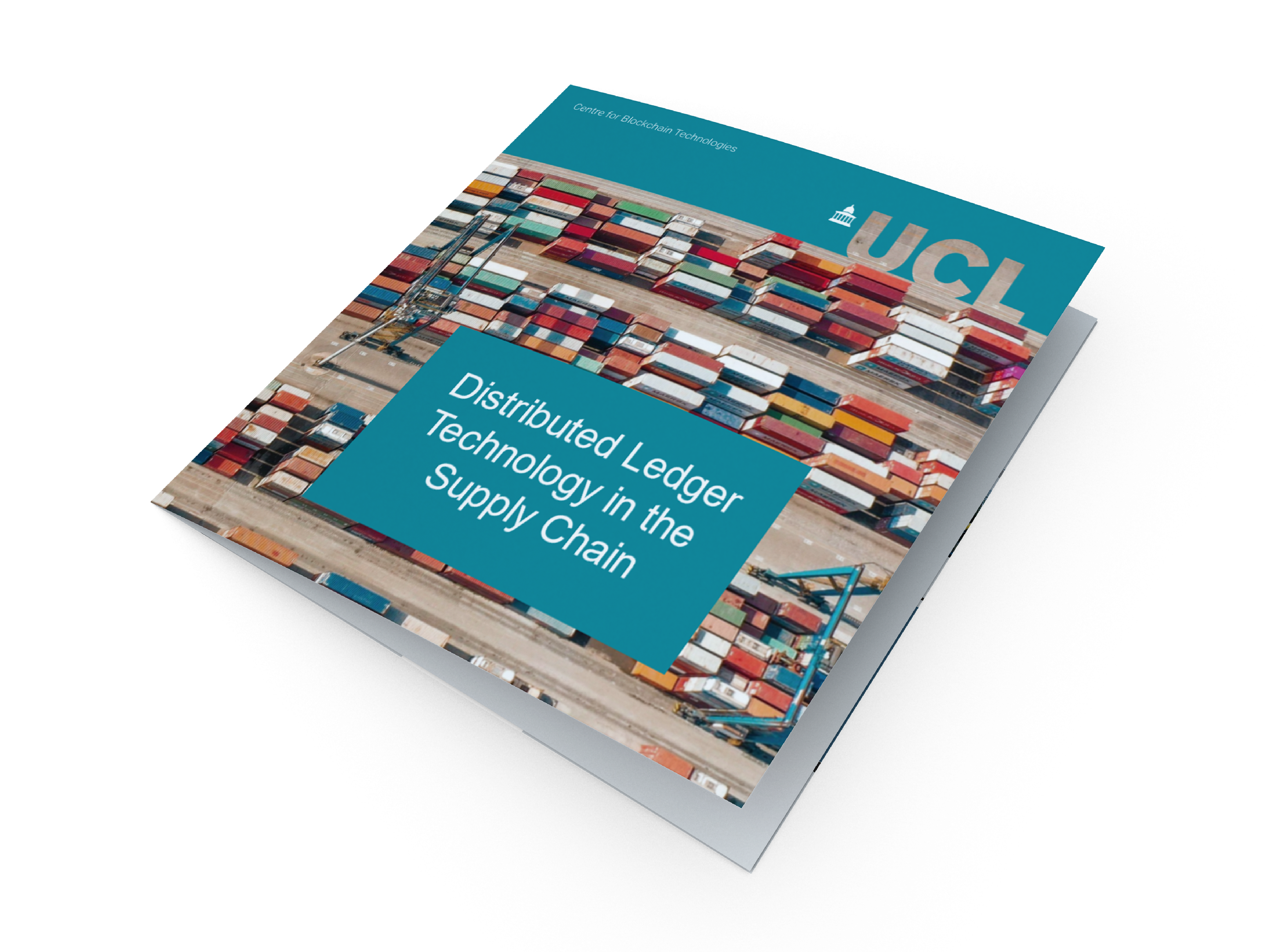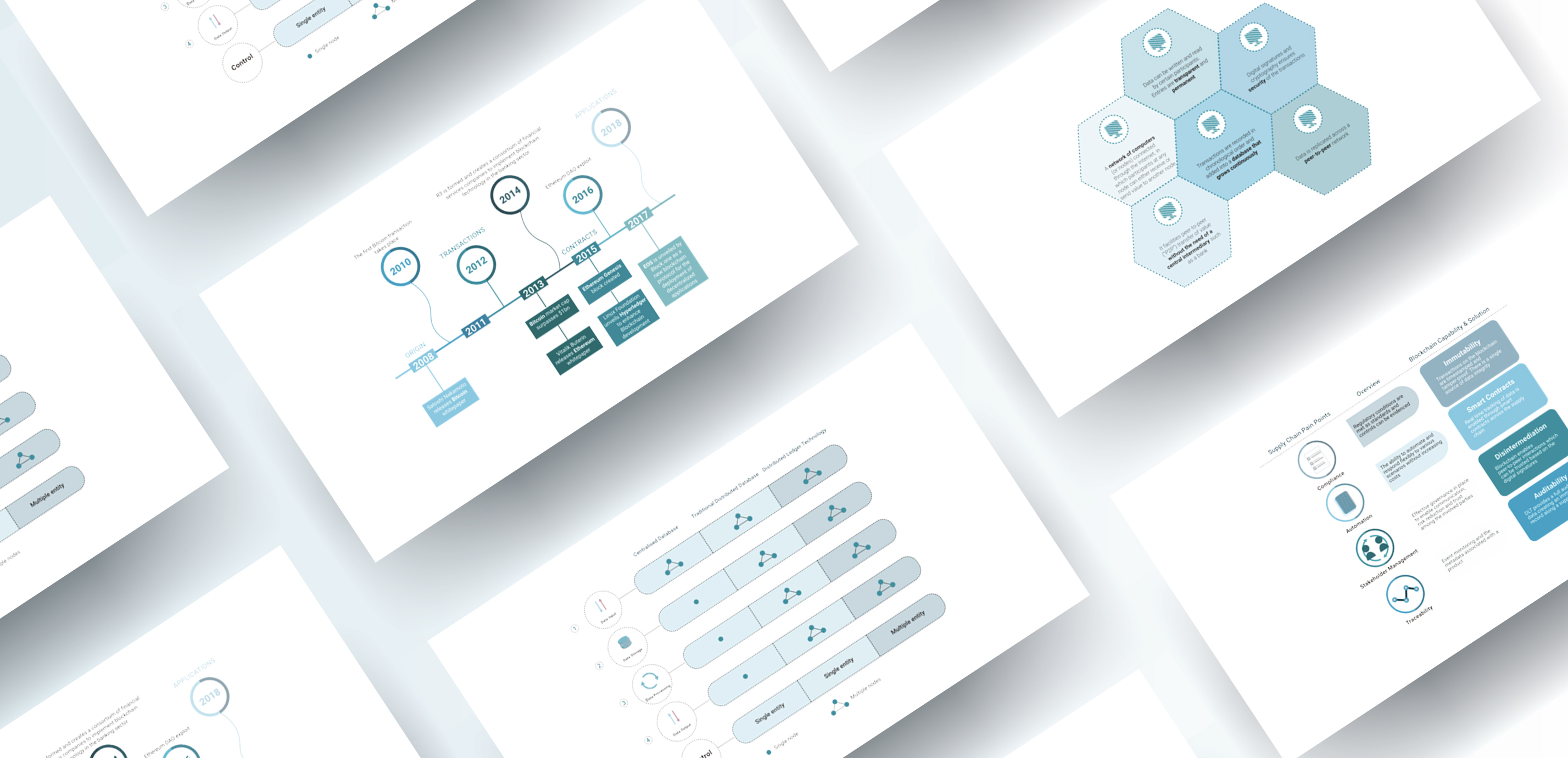REPORT
DLT in the Supply Chain
Where is DLT being adopted and what is the current adoption in industry?
SHARE THE REPORT
REPORT
DLT in the Supply Chain
Where is DLT being adopted and what is the current adoption in industry?
SHARE THE REPORT
UCL CBT and Retail Blockchain Consortium release report on global DLT adoption in supply chain
Over 100 projects from around the world have been analysed.
Despite the increasing opportunity for digitisation and looming disruption, currently, application areas and progress of DLT adoption in this area are not well understood. This report seeks to shed light on where DLT is being applied functionally in global physical supply chains and within certain sectors.
UCL CBT and Retail Blockchain Consortium release report on global DLT adoption in supply chain
Over 100 projects from around the world have been analysed.
Despite the increasing opportunity for digitisation and looming disruption, currently, application areas and progress of DLT adoption in this area are not well understood. This report seeks to shed light on where DLT is being applied functionally in global physical supply chains and within certain sectors.
About the Report
The UCL CBT, with the support of the Retail Blockchain Consortium (RBC), have created a market report looking at the adoption of Distributed Ledger Technology (DLT) in physical supply chains. This report is the first comprehensive outlook on the state of DLT in the global physical supply chain sector. As part of this report over 100 different projects have been analysed including start-ups, corporates, consortia and government that are implementing various aspects of DLT in the applications areas of tracing (provenance), logistics, financial transactions, retail operations and circular economy. This initial report looks more closely at the impacts of DLT in the physical supply chain in the application areas in the Grocery, Fashion and Healthcare sectors.

What Blockchain means for the Retail Value Chain
In a retail context, the most significant domain in which blockchain can create transformational change is the physical product supply chain. By putting assets first, blockchain can enable an efficient flow of data and funds from each stakeholder at each step of the chain. This can deliver fundamentally new ways of working and brings a visibility and control on each supply chain which is simply not achievable in centralised configurations where data has to pass from one environment to the next. However, transformation is never straightforward – particularly so in the context of increasingly complex supply chains with multiple manufacturers, processors and distributors along the way. It requires a collective engagement and industry-level initiatives to drive adoption and deliver benefits to the supply chain participants and end consumers.
What Blockchain means for the Retail Value Chain
In a retail context, the most significant domain in which blockchain can create transformational change is the physical product supply chain. By putting assets first, blockchain can enable an efficient flow of data and funds from each stakeholder at each step of the chain. This can deliver fundamentally new ways of working and brings a visibility and control on each supply chain which is simply not achievable in centralised configurations where data has to pass from one environment to the next. However, transformation is never straightforward – particularly so in the context of increasingly complex supply chains with multiple manufacturers, processors and distributors along the way. It requires a collective engagement and industry-level initiatives to drive adoption and deliver benefits to the supply chain participants and end consumers.

Highlights from the Report
— Progress of projects is well developed with nearly 15% of projects analysed having moved into production.
— Projects are nearly equally split between the Americas, Europe and Asia. On a country level, the USA dominates. Chinese projects are underreported due to the lack of English language information available. This conclusion can be made by comparing the number of patents being filed by Chinese companies, which are comparable to those filed by American companies.
— Over half of all projects analysed are utilising private blockchains.
— The Grocery sector has the greatest number of active projects.
— The greatest number of projects is within the Product Tracing usage area, followed by Logistics and Financial Transactions. The Circular Economy and Retail Operations areas are not well developed but are beginning to attract attention.
— There are overlaps between projects when analysing by application areas (i.e. projects that operate in one usage area also operate in other usage areas). This is not the case when looking at sectors; for instance, Grocery projects overlap with Healthcare and Fashion, but Fashion and Healthcare do not.
— Funding levels and the operational scale of projects are approximately equivalent across Product Tracing, Logistics and Financial Transactions. Progress and partners are most developed in the Product Tracing area and Logistics, with Financial Transactions not yet as developed.
Highlights from the Report
— Progress of projects is well developed with nearly 15% of projects analysed having moved into production.
— Projects are nearly equally split between the Americas, Europe and Asia. On a country level, the USA dominates. Chinese projects are underreported due to the lack of English language information available. This conclusion can be made by comparing the number of patents being filed by Chinese companies, which are comparable to those filed by American companies.
— Over half of all projects analysed are utilising private blockchains.
— The Grocery sector has the greatest number of active projects.
— The greatest number of projects is within the Product Tracing usage area, followed by Logistics and Financial Transactions. The Circular Economy and Retail Operations areas are not well developed but are beginning to attract attention.
— There are overlaps between projects when analysing by application areas (i.e. projects that operate in one usage area also operate in other usage areas). This is not the case when looking at sectors; for instance, Grocery projects overlap with Healthcare and Fashion, but Fashion and Healthcare do not.
— Funding levels and the operational scale of projects are approximately equivalent across Product Tracing, Logistics and Financial Transactions. Progress and partners are most developed in the Product Tracing area and Logistics, with Financial Transactions not yet as developed.

Future Reports
As this research shows, DLT is being adopted within the Supply Chain. What remains to be seen is how it will evolve beyond providing a data sharing infrastructure. How quickly will the more disruptive aspects of the technology, namely new business model development through smart contract and token utilisation, begin to appear? Certainly, based on the levels of experimentation and gradual movement of projects to production it may be sooner than many would anticipate. Given the lack of digitisation in certain supply chain processes, the leap frogging effect of moving directly from manual, paper-based processes to DLT ones will streamline the implementation of the technology. This report on DLT in the Supply Chain is the first in a series of reports that the UCL CBT is producing on various aspects of DLT adoption in the retail value chain. Future reports will explore in further depth the topics of track and trace, digital twinning, digital identity, and regulation, certification and compliance.
Future Reports
As this research shows, DLT is being adopted within the Supply Chain. What remains to be seen is how it will evolve beyond providing a data sharing infrastructure. How quickly will the more disruptive aspects of the technology, namely new business model development through smart contract and token utilisation, begin to appear? Certainly, based on the levels of experimentation and gradual movement of projects to production it may be sooner than many would anticipate. Given the lack of digitisation in certain supply chain processes, the leap frogging effect of moving directly from manual, paper-based processes to DLT ones will streamline the implementation of the technology. This report on DLT in the Supply Chain is the first in a series of reports that the UCL CBT is producing on various aspects of DLT adoption in the retail value chain. Future reports will explore in further depth the topics of track and trace, digital twinning, digital identity, and regulation, certification and compliance.



